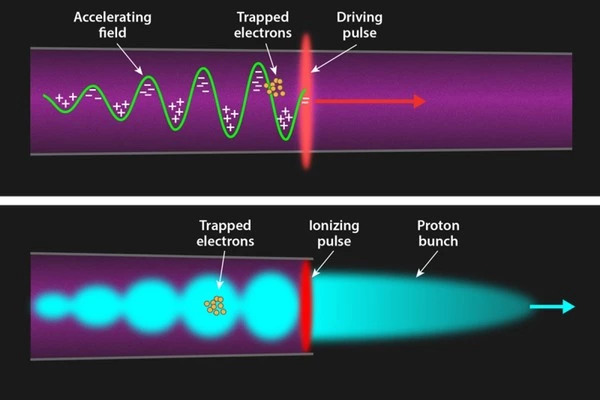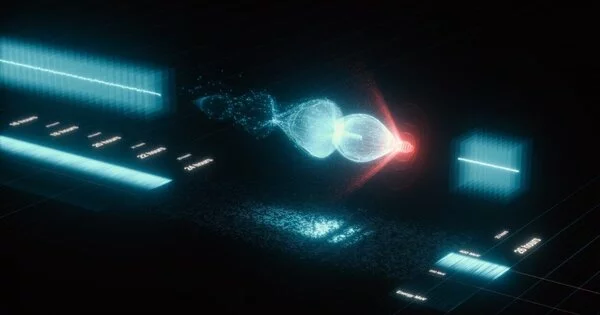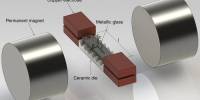Plasma-based accelerators boost the kinetic energy of charged particles like electrons, protons, and ions by using plasmas. Plasma-based accelerators typically use laser-produced plasmas with broken charge neutrality in a localized area. The plasma-based approach allows for much smaller devices than conventional particle accelerators.
If one particle accelerator is insufficient to achieve the desired result, why not combine two? This concept has been implemented by an international team led by physicists at LMU Munich’s Centre for Advanced Laser Applications (CALA). It combined two plasma-based electron acceleration methods, namely a laser-driven wakefield accelerator (LWFA) and a particle-beam-driven wakefield accelerator (PBWFA) (PWFA). The physicists achieve better electron beam stability and particle density with this combination than with a single plasma accelerator. As a result, the novel concept opens up new avenues for plasma-based particle acceleration.
Wakefield acceleration based on plasma is a promising candidate for the next generation of particle accelerators. An intense driver in such a machine moves through plasma, a particle mixture of ions and free electrons. The driver, which is either a powerful laser pulse or a brief burst of high-energy particles, displaces the plasma electrons that get in its way.
The displaced matter flows back to its original position behind the driver, much like a boat on a lake. Electrons can surf the resulting wake behind the driver and reach energies in the gigaelectronvolt range within a few millimeters. These plasma accelerators, however, are difficult to control due to their enormously large acceleration fields.
The displaced matter flows back to its original position behind the driver, much like a boat on a lake. Electrons can surf the resulting wake behind the driver and reach energies in the gigaelectronvolt range within a few millimeters. These plasma accelerators, however, are difficult to control due to their enormously large acceleration fields.
The CALA laser physicists have now experimentally demonstrated that by combining a laser-driven and an electron-beam-driven plasma accelerator, higher stability and particle density can be achieved than is possible with a single, laser-driven accelerator stage. In this “hybrid” approach, electron bunches with a high peak current are generated in a first laser-driven wakefield accelerator.

These electrons serve as a driver for the subsequent particle-driven wakefield accelerator, in which again electrons are accelerated. The stability of the newly generated electron bunch is much higher, since the second accelerator stage is much less sensitive to unavoidable fluctuations of the driver. The hybrid approach thus combines the advantages of the two complementary driver types for plasma-based accelerators.
The stability and high charge density of the generated electron bunches is a fundamental requirement for the generation of brilliant X-rays via various mechanisms. On the one hand, the narrow-band, low-divergence electron bunches are well suited for the generation of hard X-rays via Thomson-backscattering, which can be used for medical imaging. On the other hand, the high beam quality should enable novel and challenging applications such as plasma-based free-electron lasers (FELs). Such FEL radiation could be used in the future to study ultrafast phenomena in solids with atomic spatial and temporal resolution.
Plasma Accelerator (also known as Paccel or Accel) is the fourth Path 1 upgrade for the Dartling Gunner in Bloons TD 6. Instead of launching individual projectiles, it now shoots a concentrated beam of plasma energy in the direction of the cursor or the player who last tapped. Bloons that cross the beam take damage, and the beam’s endpoint deals additional damage to Bloons.
















